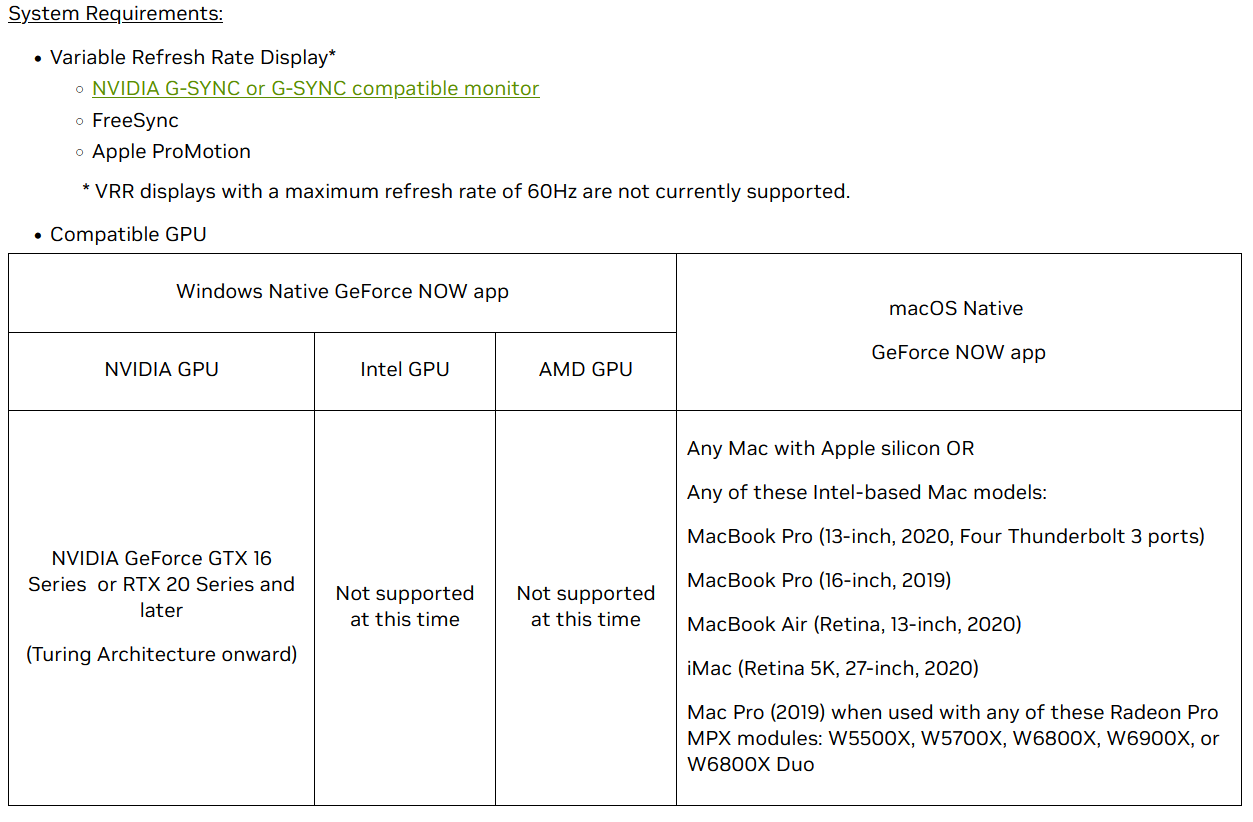Today, NVIDIA provides variable refresh rate support for its GeForce Now cloud gaming service. The company originally promised variable refresh support on GeForce Now during CES in early January, and seems to have been waiting for it to launch alongside the GeForce Now Day Pass, which is also available now.
Variable refresh rate (VRR) technology, including NVIDIA’s own G-Sync, has been around for about a decade, allowing a monitor to synchronize its refresh rate with a game’s instantaneous frame rate. This synchronization prevents screen tearing when two or more frames appear on the display at the same time. Without VRR technology, gamers would either have to live with the visual jarring of screen tearing, or enable V-Sync, which solves the screen tearing problem by locking the frame rate to the refresh rate (or a fraction of it). VRR became popular because V-Sync added latency and could lower frame rates since it was effectively a frame rate limiter.
Dubbed “Cloud G-Sync,” NVIDIA not only brings a screen-tearing-free experience to GeForce Now with variable refresh rate support, but also reduces overall latency on Reflex by “varying the client’s streaming rate.” Reduce latency. Enable the game. Before VRR debuts on GeForce Now, users will either have to enable v-sync in-game, enable stream-level v-sync settings that have the benefit of not locking the game’s frame rate, or accept screen tearing. GeForce Now Ultimate members can also Pair VRR with Reflex-driven 60 FPS and 120 FPS streaming modes.
According to NVIDIA’s technical documentation, variable refresh rate support on GeForce Now works with Macs and Windows PCs connected to VRR-enabled monitors. This includes G-Sync monitors on Windows, VESA AdaptiveSync/FreeSync monitors, HDMI 2.1 VRR monitors, and even Apple ProMotion monitors, such as the panels built into the latest MacBook Pro laptops. The biggest compatibility hurdle right now is actually on the GPU side; Windows computers require an NVIDIA GPU to use VRR with GeForce Now. Intel and AMD GPUs are “currently not supported”.

Although G-SYNC was originally launched in 2013 and GeForce Now since 2015, the intersection between the two has not occurred until now. It’s unclear why NVIDIA waited so long to bring G-Sync to GeForce Now; the company’s initial announcement simply noted that “new and improved cloud G-SYNC technology goes even further,” implying that this wasn’t possible before, But there’s no exact explanation why.